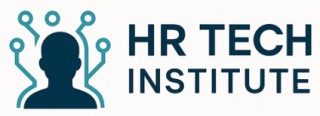
Defining Span of Control
The Concept of Span of Control
Understanding the span of control is fundamental to effective organizational management. Simply put, it refers to the number of direct reports or subordinates a manager is responsible for overseeing directly. This concept is crucial because it influences several aspects of organizational dynamics, such as communication efficiency, decision-making processes, and overall productivity. Span of control can vary widely, often described as either a wide span or a narrow span. A wide span presents a structure where a manager oversees a large number of employees, promoting autonomy and potentially enhancing efficiency by minimizing layers of hierarchy. Conversely, a narrow span allows for more direct supervision and guidance from managers, often necessary in roles requiring extensive training and close monitoring. When deciding on the appropriate span, it's essential to consider several factors like the nature of work being performed, the complexity of tasks, the level of skill among team members, and the manager's capacity for effective control. Choosing an ideal span of control isn't merely about the number of employees but depends on aligning with organizational goals and strategies. For those interested in exploring how different HR tech solutions might impact the management of spans, consider exploring alternatives to Payscale for HR tech solutions to better accommodate their organization's unique needs and dynamics.Historical Context and Evolution
The Evolution of Span of Control Over Time
The concept of span of control, or the number of direct reports a manager oversees, has evolved considerably since it was first introduced in organizational management. Historically, the appropriate span was perceived as a singular ideal number of employees a manager could effectively supervise. However, as workplace dynamics and the nature of work have changed, so too has the approach to managing spans of control.
Traditionally, organizations leaned towards a narrower span, where a manager had limited subordinates, fostering closer communication and direct oversight. This management style often required a structured organizational hierarchy, where the control span allowed for detailed supervision of tasks and decisions.
As work environments grew more complex and diverse, a shift towards a wider span emerged. This change was partly influenced by advances in communication technologies and changes in management principles. A wider span enabled more autonomy among employees and encouraged decentralized decision making within teams. Managers could oversee more number employees, empowering them to focus on strategic management rather than micromanagement.
In today's organizations, the perfect span is context-dependent. Factors like organizational structure, the nature of work, and technological support mechanisms influence whether a wide span or a narrower span is most effective. Interestingly, the move towards wider spans in many industries reflects an understanding of control, communication, and the balance of authority necessary for effective operations in modern workplaces.
As organizations continue to adapt, understanding VTO in Human Resources Tech becomes vital. It highlights the importance of balancing flexibility and control, which is central to determining the ideal span in contemporary settings.
Impact on Organizational Efficiency
Organizational Efficiency and Span of Control
The span of control within an organization is a critical factor that can significantly impact its operational efficiency. Essentially, it refers to the number of direct reports a manager can effectively oversee. Balancing this span is crucial for maintaining smooth communication and workflow.
A wider span of control means a manager oversees a large number of employees. This might lead to improved communication and quicker decision-making as there are fewer hierarchical layers. However, it could also lead to burnout for managers as they juggle numerous tasks and direct reports, potentially compromising managerial effectiveness and employee satisfaction.
On the other hand, a narrower span of control allows for more focused management and can result in better quality of oversight. Managers have the bandwidth to offer individualized attention and support, fostering a more cohesive team structure. However, this can also translate into higher payroll costs for the organization, as more managers may be required to cover the number of subordinates.
The appropriate span largely depends on the nature of the work being performed. Tasks that are complex and require significant oversight might benefit from a narrower span, ensuring each employee receives the necessary guidance and training. Conversely, more routine tasks allow for a wider span, maximizing employee autonomy and reducing unnecessary managerial layers.
HR technology plays a pivotal role in managing and optimizing spans of control. By leveraging the right tools, organizations can streamline communication, enhance management training, and effectively distribute workloads among team members. Understanding these dynamics is crucial for any organization aiming to increase efficiency and promote trust-based practices. For further insights into how innovative HR strategies can enhance operational efficiency, you can explore the benefits of trust-based time off in HR tech.
Technology's Role in Managing Span of Control
The Role of Technology in Optimizing Spans of Control
Efficient management of an organization's span of control is crucial for maintaining effective communication and decision-making across all levels. With the advancement of HR technology, managing the span of control has become significantly more streamlined and informed. The incorporation of sophisticated HR systems allows managers to better handle their team structures, optimize the number of employees per manager, and enhance overall workflow. One key benefit of utilizing technology in span management is improving the allocation of tasks and control over team members. Digital management tools enable a clear overview of an organization's span, empowering managers with the data needed to maintain an ideal balance. These tools leverage data analytics to suggest adjustments in the number of direct reports, providing insights into whether a wider span or narrower span might be more suitable, based on the nature of the work and team dynamics.Enhancing Training and Development
HR tech platforms also support training initiatives that equip managers with the skills necessary to handle their organizational structure effectively. Customized training courses can focus on enhancing decision-making skills, thereby increasing a manager's capability to manage a wide span of control. Addressing the control ratio through training can lead to a more stable organizational environment where all team members are aware of their roles and responsibilities.Streamlining Communication and Reporting
Another advantage is the way HR tech can streamline communication across different levels of an organization. With digital communication tools, managers can keep their subordinates well-informed and engaged, irrespective of their number. This results in a reduction of communication barriers, ensuring that direct reports are managed efficiently, and organizational goals are met. By integrating these technological solutions, organizations can achieve a well-balanced span management system. This not only boosts productivity but also ensures that employees remain engaged and motivated, ultimately resulting in an efficient and high-performing team structure.Challenges in Implementing Optimal Span of Control
Confronting Hurdles in Optimizing Control Ratios
The implementation of an optimal span of control can present several challenges for organizations aiming to strike the right balance between wide and narrow spans. This balance significantly impacts the manager's capacity to effectively oversee their number of employees, make informed decisions, and maintain open channels of communication. Organizations often face the challenge of determining the ideal number of direct reports that a manager can efficiently control. A wider span can result in overburdened managers who struggle to devote adequate attention to each subordinate, impacting the nature and quality of work. Conversely, a narrower span may lead to an excessively hierarchical structure, restricting decision-making agility. Additionally, the management's ability to incorporate systematic training courses for managers and team members tends to influence the successful implementation of the appropriate span. Equipping managers with the skills necessary to handle a broad range of tasks and communicate effectively with each direct report is key to enhancing span management. This is especially pertinent in environments where structured training and development programs for managerial roles are lacking. Furthermore, assessing the nature of work and ensuring that it aligns with the determined spans control is essential. Complex or highly specialized tasks may necessitate a narrower span to allow for precise management and oversight, whereas routine or less specialized tasks may benefit from a wider control span. Ultimately, finding the optimal span control within an organization requires a nuanced understanding of its unique structure, tasks, and communication pathways. Ensuring that management approaches are adaptive and supported by sufficient training and resources is vital to overcoming inherent challenges in achieving efficient span management.Future Trends in Span of Control and HR Tech
Looking Ahead: Span of Control in the Age of HR Tech
The landscape of span of control is set to be shaped by emerging trends in HR technology. As organizations continue to evolve, both structure and management practices are seeing significant changes. It's important to consider what these trends mean for the future of span control in management.- Technology Integration: Advanced analytics and AI-powered tools are becoming crucial in understanding and managing spans of control. These technologies allow for detailed tracking of employee performance, optimizing the number of direct reports a manager can effectively oversee.
- Personalized Management: With an increased emphasis on employee-centered approaches, managers are likely to adopt more personalized styles of management. This shift may mean redefining appropriate spans to ensure that team members receive the necessary support and guidance tailored to their specific roles and tasks.
- Evolving Workforce Capabilities: As training courses become more sophisticated and readily available, employees enhance their skills and job roles transform. This progression requires adapting the organizational structure to maintain an ideal span of control that aligns with the advanced capabilities of the workforce.
- Agile Organizational Structures: Upcoming trends point towards more dynamic and agile structures. Rather than fixed hierarchical models, organizations might lean towards flexible systems that accommodate varying numbers of subordinates, depending on the nature of work and project demands.













